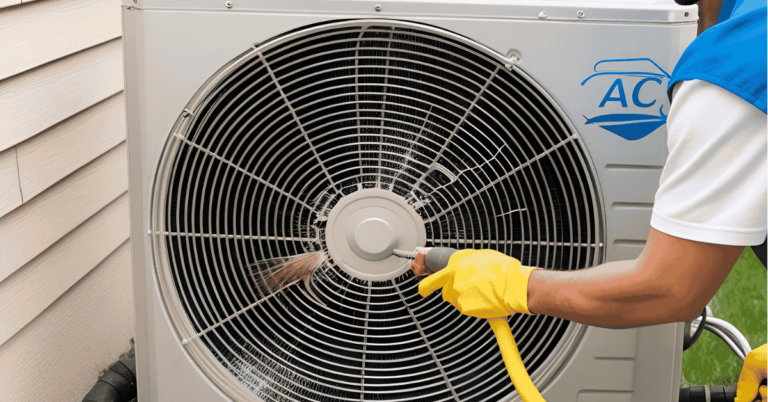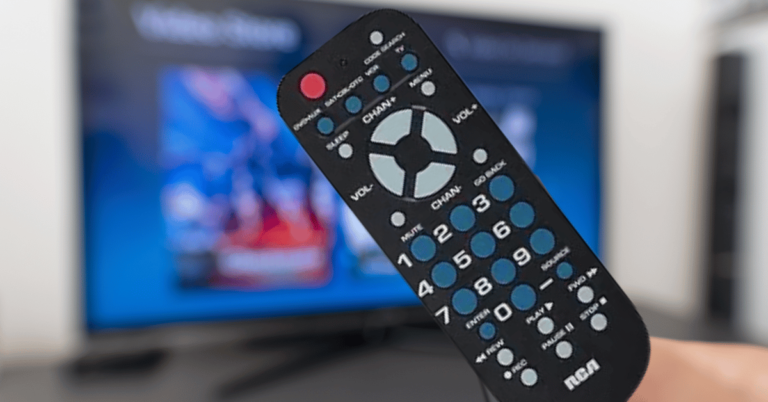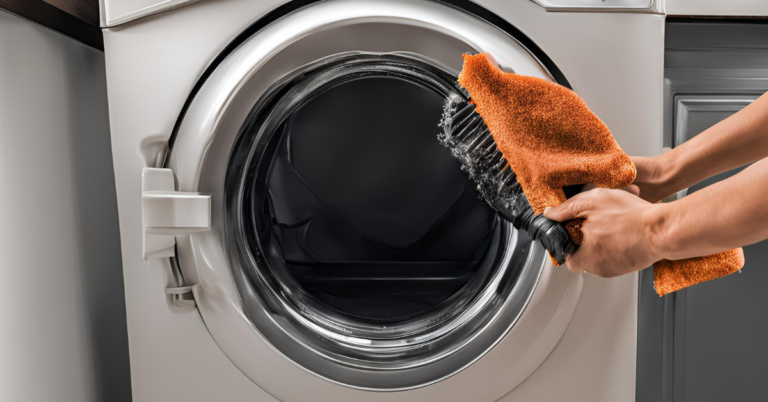Is Starlink Good for Gaming? Everything You Must Know
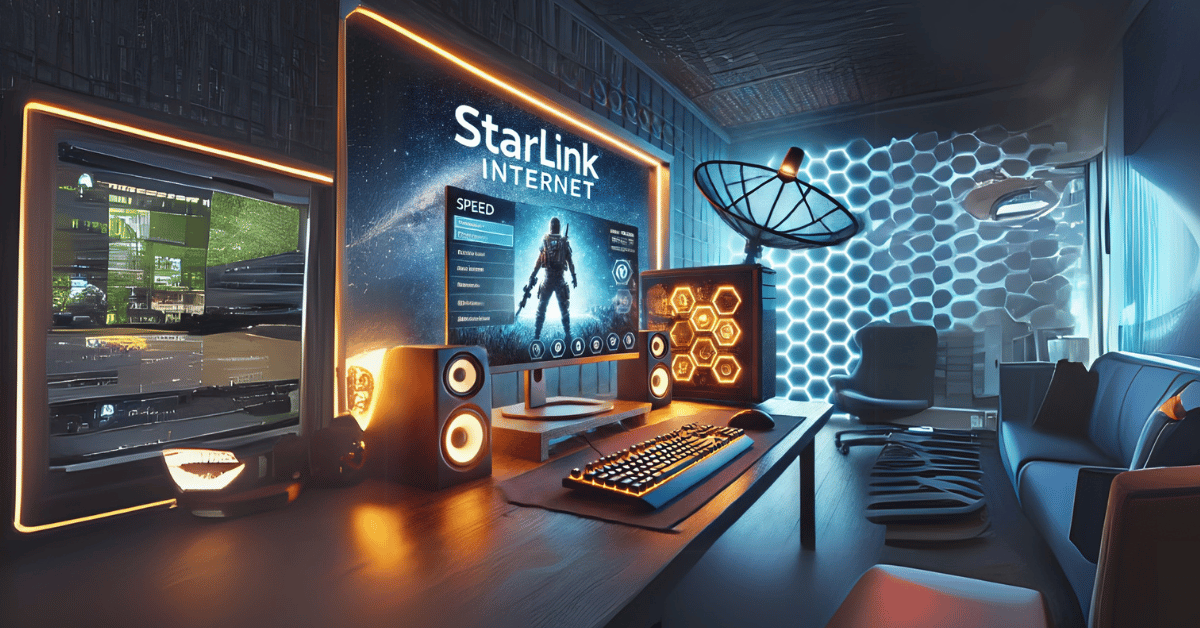
Gaming is more than just a pastime; it’s a global passion connecting players across phones, tablets, laptops, and high-powered gaming desktops. But what if you live in a rural area or travel to remote locations?
Many gamers struggle with slow or unreliable internet, especially in places where traditional cable or fiber connections don’t reach.
This is where Starlink, the satellite internet service by SpaceX, promises to deliver fast and reliable internet, even in remote areas like rural Idaho.
With its advanced satellite network, Starlink aims to provide high-end modern internet access that powers entire homes. Whether you’re streaming media, working from home, or gaming on a traditional console, Starlink’s connection has the potential to transform your localized experience into one that feels seamless and global.
But is Starlink good for gaming?
Can it handle the demands of online games, where every millisecond counts?
To answer these questions, we’ve done rigorous testing, analyzing raw numbers and real-world experiences.
For gamers living in rural areas where modern conveniences like running water or a stable power grid are essential, Starlink could be a game-changer.
Whether you’re setting up a Starlink-equipped home for day-to-day work or creating a whole-home connected gaming experience, this guide will help you understand if Starlink is the victory you’ve been looking for.
From its setup and accessories to its performance compared to traditional ISPs, and even its suitability for on-the-go gamers using Starlink for RV, we’ve covered it all. Read on to decide if Starlink is right for you!
What Makes an Internet Connection Good for Gaming?

A gaming-ready internet connection requires speed, low latency, and stability. Speed ensures fast downloads and uploads, while low latency, measured in milliseconds, minimizes input lag and delays in online gaming. Reliable stability prevents frequent losses, dropped connections, and inaccurate map positioning.
For gaming, an acceptable internet connection must move data quickly and efficiently to game servers without interruptions, while an unplayable internet connection leads to high latency, delayed actions, and dips in performance.
1. Stability
Stability is crucial for online gaming to avoid dropped data packets, spotty connections, or sudden dips in performance. Issues like obstructed dish views, damaged cables, or environmental factors such as cloud cover and precipitation can cause instability. Maintaining a steady connection is essential to prevent frequent disruptions that ruin gaming experiences.
2. Speed
Fast internet speed, measured in megabits per second (Mbps), ensures quick downloads and smooth uploads, enabling a seamless flow of data between the local network and game servers. Starlink, using low-Earth-orbiting satellites at around 340 miles compared to geostationary satellites at 22,000 miles, offers competitive speed among satellite internet providers, making it a viable option for gamers.
3. Latency
Low latency is key to reducing ping and ensuring precise actions in online gaming. High latency can result in delayed responses, input lag, and inaccurate map positioning, creating frustrating gameplay. Starlink’s LEO satellites help lower latency compared to traditional satellite ISPs, but factors like local issues and corporate service infrastructure also play a role in maintaining an optimal connection.
Can Satellite Internet Handle Online Games?
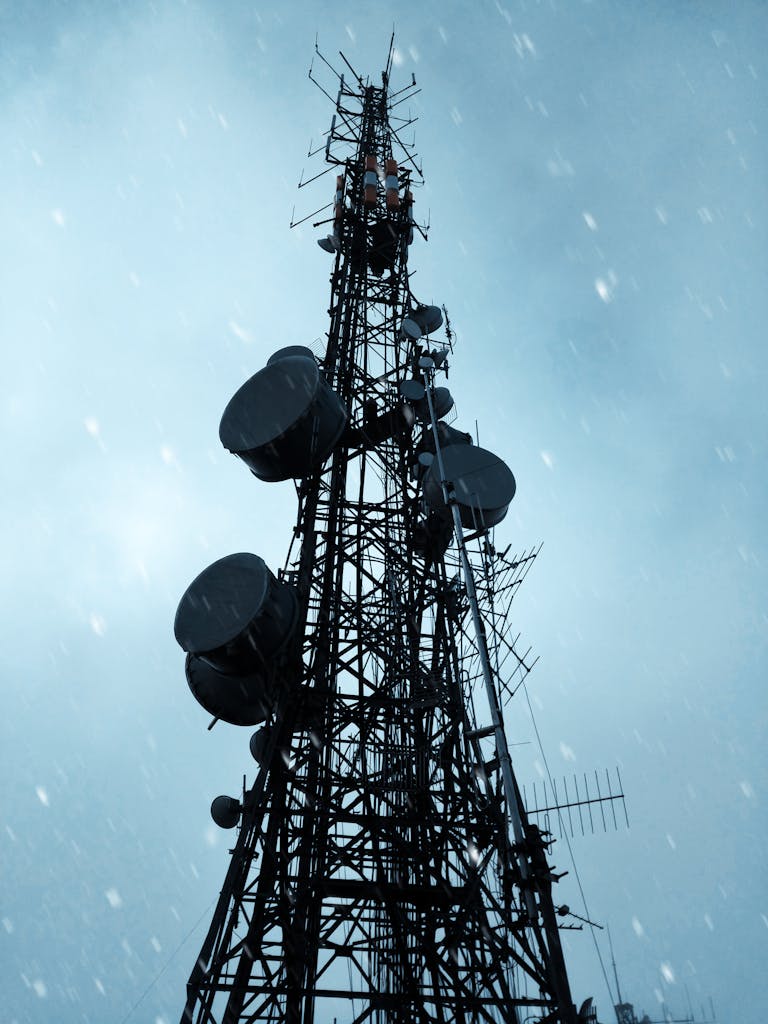
Starlink satellite internet is a game-changer for online gaming, especially compared to geostationary satellite networks like those used by Viasat and HughesNet. Its lower latency makes fast-paced multiplayer games like Fortnite and Call of Duty more playable, addressing many traditional satellite connection challenges.
Turn-based games from the Civilization franchise, such as Civilization VI or Stellaris, shine with Starlink’s reliable internet connection. Their complex mechanics and leisurely pace ensure lag has minimal impact, making them ideal for satellite users.
Turn-based tactics and combat games like Wargroove or Mordheim: City of the Damned also perform smoothly, letting players focus on strategy without worrying about delays.
Genres like digital collectible card games, including Hearthstone and Magic the Gathering: Arena, thrive on Starlink, helping their competitive scenes grow. Even sports games like FIFA 22, football video games, or casual titles like bowling and golf deliver enjoyable experiences.
By meeting the internet requirements of various games, Starlink proves it can handle everything from tactical combat to eSports and leisurely board game adaptations like chess and Risk.
Can You Play Cloud Games on Starlink?
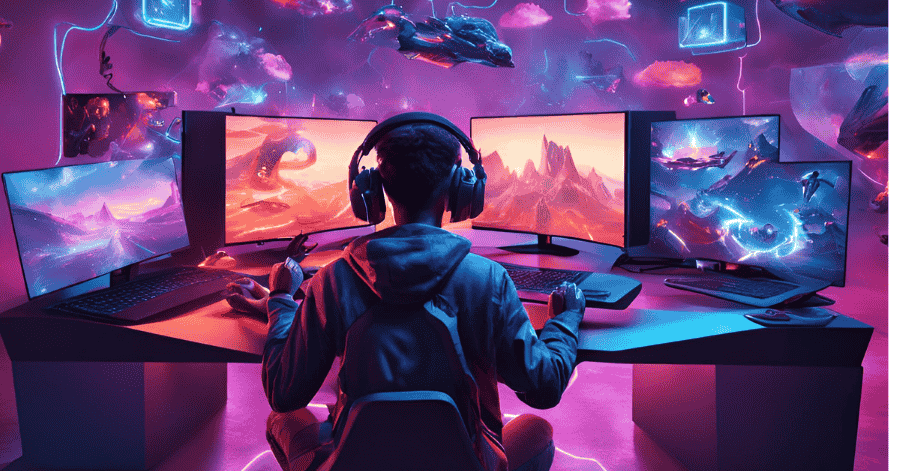
Cloud gaming on Starlink offers a promising way to enjoy games without needing high-end hardware. Chromebooks, like the Acer Chromebook 516 GE, are perfect for this with their gaming edition features and ChromeOS support for cloud gaming services like Nvidia GeForce Now and Amazon Luna.
These services off-load the need for local game files and gaming hardware muscle, making it possible to play real games even without a GPU.
Starlink’s satellite internet provides a stable connection for online gaming, allowing 1080p gaming at 120Hz. During the game-testing period, titles like Rainbow Six: Siege, Cyberpunk 2077, and Chorus delivered smooth frame rates with minimal lag or buggy issues.
While stutter or unexpected disconnection can happen, the overall gaming experience is reliable and enjoyable, even during a Zoom call or multitasking.
With its local support for graphics acceleration and a speedy connection, Starlink makes cloud gaming accessible for new-age players.
Whether you’re gaming on a Chromebook or exploring cloud gaming services, Starlink is proving to be a good option for stable, high-quality gaming.
Starlink Gaming Performance (Cunsumer’s Experience)
When Starlink was first tested for gaming, many users were unsure how it would stack up against traditional broadband options like cable or fiber. With the Starlink dish and router, initial reviews reported download speeds ranging from 20Mbps to 200Mbps. These speeds were sufficient for most everyday tasks, including streaming Netflix without buffering, participating in office Slack chats, and general web browsing.
However, upload speeds remained below 10Mbps, which could limit some online gaming scenarios.
For competitive online games, especially fast-paced first-person shooters, speed and latency are critical. Testing Starlink’s satellite connection revealed ping rates between 20ms and 50ms on Cloudflare’s 1.1.1.1 and Google’s 8.8.8.8 servers. Occasionally, latency spiked to 100ms, but it generally stayed under 50ms, even during intense gameplay.
The proximity of the ground station in Seattle, Wash., and my location in rural Idaho played a role in keeping these ping results reliable.
The motorized Starlink dish is designed to track overhead satellites, switching between them to maintain connectivity. While this beam information adjustment caused brief interruptions, the connection remained surprisingly consistent for split-second actions in fast-paced games.
That said, the system isn’t without its fatal flaw—latency spikes can still occur, which might frustrate players in highly competitive matches.
Despite some limitations, Starlink’s satellite-based internet offers a lifeline for gamers in rural areas where stationary connections like DSL, cable, or fiber are unavailable.
Its ability to combine speed, reliability, and adaptability makes it a strong contender for online gaming, especially in underserved locations.
Starlink Gaming: My Hands-On Impressions
Starlink’s gaming performance is impressive, especially for both casual players and competitive gamers. With connection speeds of 160Mbps to 200Mbps and ping rates between 30ms to 60ms, downloading games and ensuring every game installed runs smoothly is rarely an issue. This makes it a reliable choice for handling raw data-heavy gaming setups.
Single-player titles like Cyberpunk 2077 and Hitman 3 thrive offline, but Starlink excels in online environments too. Jumping into a lobby for fast-paced matches in Valorant or Rainbow Six: Siege feels seamless, with minimal lag issues affecting gameplay during critical moments.
Even survival and kill-or-be-killed FPS genres, like Fortnite’s combat free-for-all games, maintain the team-based dynamic without significant disruptions.
Starlink’s constellation-based satellite service ensures consistent performance for high-octane action in Rocket League’s vehicular soccer matches and pulse-pounding combat scenarios. Slower games like Wizard 101 or sprawling space simulators like Elite Dangerous also perform well, making Starlink a versatile option.
While occasional dropped connections during satellite hand-offs may occur, the service’s overall stability reinforces its place in gaming, from casual fun to intense survival matches.
Starlink vs. the Competition
Starlink, a satellite internet service by SpaceX, is changing the way we think about online connectivity for gaming and beyond. With impressive speeds of up to 200Mbps, low ping rates of 30ms to 60ms, and global satellite coverage, Starlink leverages advanced satellites to deliver competitive speeds, even in remote regions.
Its ability to bring reliable in-home internet connections to areas where fiber and cable are unavailable makes it a unique contender. Now let’s discuss some competitors to see how they compare.
1- Fiber
Fiber-optic internet connections like Verizon FIOS, AT&T Fiber, and Google Fiber are the gold standard for gaming, offering speeds of up to 1Gbps with synchronous download and upload rates and single-digit latency.
These connections excel at handling intensive gaming sessions, but their availability is limited to specific urban and suburban regions.
2- DSL
Digital subscriber line (DSL) internet uses copper phone lines and unused frequency spectrum to provide speeds up to 100Mbps. This phone-line-based connection allows for simultaneous phone calls and internet use without interruption.
While local ISPs offer service tiers for basic online tasks like HD Netflix movies or Zoom calls, gaming experiences can suffer due to ping rates of 40ms to 100ms and occasional disruptions.
3- Cable
Cable internet from providers like Comcast Xfinity, Sparklight, and Cox relies on coaxial connections originally designed for cable TV. Speeds range from 500Mbps to 1Gbps, with latency around 20ms.
However, heavy usage during peak times can lead to consistency issues, impacting activities like competitive gaming.
4- HughesNet
HughesNet, a satellite internet provider, offers 20Mbps download and 3Mbps upload speeds but suffers from latency as high as 600ms. While suitable for basic web browsing and email, its high latency and limited speeds make it unsuitable for gaming or other low-latency needs.
5- Viasat
Viasat delivers slightly faster speeds than HughesNet but still cannot match Starlink’s competitive speeds and low latency. Viasat is better suited for basic tasks in rural areas, as its satellite technology struggles with fast-paced online gaming requirements.
6- Wireless 5G
Wireless 5G networks use cell towers to deliver in-home internet connections with speeds up to 70Mbps and ping times in the double digits, averaging around 60ms. This is ideal for gaming and other online activities in areas with strong, consistent coverage.
However, coverage limitations in non-urban regions can pose challenges for maintaining ideal performance.
Starlink outshines the competition by combining speed, low latency, and rural coverage. Its ability to deliver consistent internet through satellites in ideal coverage areas makes it a top choice for gamers looking for reliable connectivity.
Advantages of Starlink for Online Gaming
Starlink is transforming online gaming, especially for rural gamers who have long dealt with delays caused by slow DSL connections and unreliable satellite services.
With latency as low as 30 to 50 milliseconds and fast download speeds ranging from 50 Mbps to 200 Mbps, Starlink ensures smooth data transmission and reduces the barriers to enjoying online gaming applications.
For both casual players and competitive gamers, Starlink offers a stable connection that enhances real-time gameplay in online multiplayer battles or even strategic poker games.
Unlike traditional satellite services with high ping rates often exceeding 100 milliseconds, Starlink’s advanced satellite data analysis software ensures superior performance with minimal interruptions.
Whether downloading game files quickly or handling the demands of intense real-time combat, Starlink proves itself as a powerful broadband option.
Its ability to minimize network congestion and provide reliable connections in rural areas makes it a standout choice for gamers seeking both speed and consistency.
How Starlink Benefits Rural Gamers?
Starlink is transforming gaming for rural gamers by offering high-speed, reliable internet access where traditional internet service providers struggle. Its availability in remote regions addresses the challenges of infrastructure, which is often expensive or logistically tricky to set up, making satellite internet services a practical solution for serious gaming.
For gamers in rural areas, activities like online casino gaming, including poker, blackjack, and roulette, are now within reach. Previously, bad internet access excluded many players from the fast-moving online casino scene, but Starlink’s reliable connectivity solves these access problems and opens up exciting new possibilities for players everywhere.
With its promising strong suits, Starlink ensures that rural gamers can enjoy the same quality of gaming experiences as those in urban areas, bridging the digital divide and making gaming more inclusive than ever.
Challenges and Considerations
Starlink by SpaceX is transforming how users connect to the internet across the globe, offering coverage in North America, Europe, and beyond. However, it faces some challenges.
Performance can vary due to system load and congestion, especially during peak usage times. Speed and latency are critical for gaming, where stable connections are essential.
Scaling up the satellite constellation to meet growing demand while maintaining quality service is another challenge. SpaceX continues deploying satellites to improve coverage and performance. Despite these considerations, Starlink is a promising option for gamers in remote areas.
Future of Gaming Using Starlink
The future of gaming using Starlink has the potential to revolutionize the gaming market globally. SpaceX’s Starlink satellite network, with its expanding number of satellites in orbit, aims to disrupt traditional systems by providing reliable internet access.
This innovation ensures stable and smooth connections even in remote, unserved, and underserved areas. It addresses poor internet issues, offering low latency and high speeds critical for ordinary online gaming and niche markets like online casino gaming.
By delivering continuous internet access, Starlink is poised to transform the gaming market. Gamers worldwide can look forward to a more enjoyable and seamless experience.
Is Starlink Good for Gaming?
Starlink is a modern satellite internet service designed to meet gaming needs, especially in rural or remote areas where cable or fiber networks are unavailable. Its subscription price is higher than traditional options like DSL, but it offers decent speeds and playable latency levels for casual gamers.
Powered by advanced satellite technology and infrastructure, Starlink provides reliable performance for less latency-sensitive games like strategy games or online casino gaming. Its satellites in orbit ensure stable connections, though occasional disruptions like dish-repositioning delays or satellite handoffs can occur.
For ultra-low-latency gaming requiring real-time participation—such as first-person shooters or real-time strategy games—Starlink may face challenges. These fast-paced environments demand consistent performance, which is often better delivered by fiber-optic or cable networks in urban areas.
Despite not being as tried and true as traditional options, Starlink offers a smooth and stable online gaming experience for players with limited ISP options, making it a good choice for those in underserved regions.
Conclusion
In conclusion, Starlink offers a promising solution to connectivity issues faced by gamers in rural areas and underserved regions. By providing high-speed satellite internet and prioritizing low-latency, it aims to bridge the market gap for remote gamers who lack access to fiber or cable internet in urban centers.
With its focus on delivering a stable connection, Starlink is gradually improving its suitability for competitive, fast-paced online games like high-stakes battle royale and poker. While it may not yet rival the reliability of traditional networks, its expanding network shows promise in enhancing player experiences.
By fostering global gaming inclusion, Starlink addresses accessibility challenges and empowers more gamers worldwide to join the digital arena. It serves as a practical solution for many and continues to evolve to meet the demands of the gaming community.




